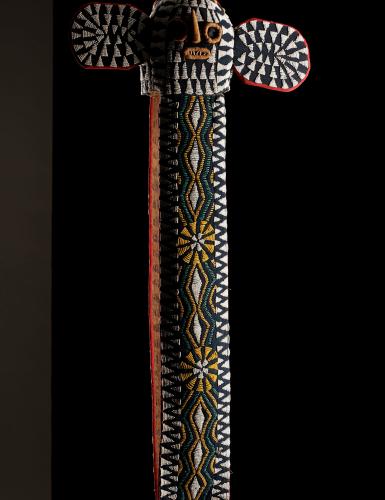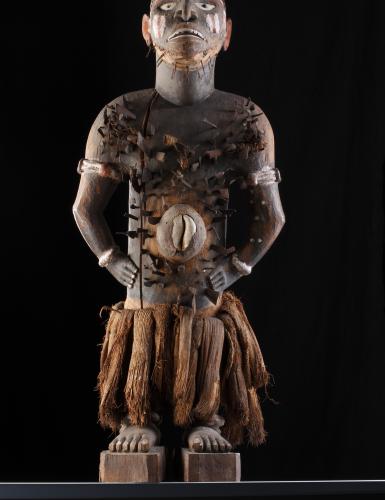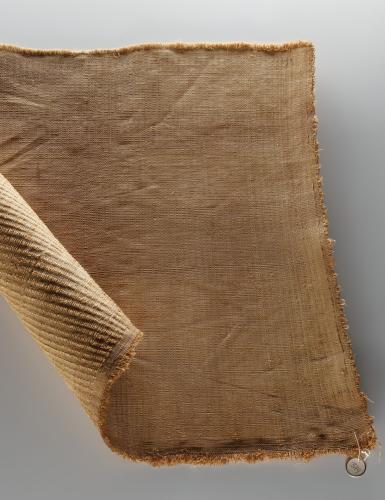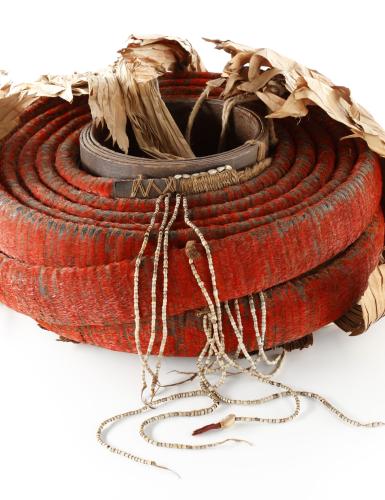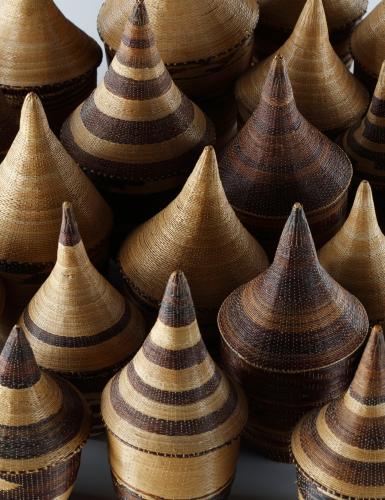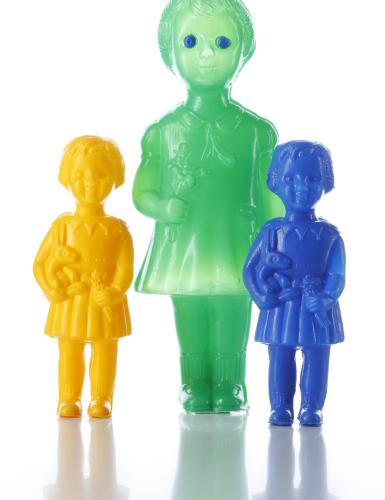The Ethnographic Study Collection at the Institute of Anthropology and African Studies houses around 2,800 objects. Over 2,300 originate from Africa, roughly 400 from Australia, Papua New Guinea, and other parts of Oceania, and about 40 from South America. The collection includes household items, textiles, jewelry, weapons, musical instruments and sacred artifacts. It is the only collection of its kind in Rhineland-Palatinate.
At the heart of the collection are over 500 objects from the Bolia and Ekonda of the equatorial rainforest, gathered during the ‘Mainz Congo Expedition’ (1951–1954) led by Erika Sulzmann together with Ernst W. Müller. Between 1956 to 1980, Erika Sulzmann undertook eight further expeditions to the Bolia and neighboring communities, steadily adding to the Mainz collection. Additional trips in the 1950s and 1960s took her to Pakistan (Hindu Kush Expedition 1955/56), Afghanistan (Stuttgart Badakshan Expedition 1962/63) and Western Africa (Hamburg Obervolta Expedition 1954/55, Haberland journey 1966 and others).
The collection grew further through exchanges with other institutes and museums. In 1968, the collection was expanded through an exchange with the Frobenius Institute in Frankfurt, trading Ekonda objects for a small Ethiopian collection. In 1971, the Institute exchanged its large and valuable Pakistan and Afghanistan collection with the Linden Museum in Stuttgart. In return, it acquired nearly 700 objects—mainly from Africa (such as the Maasai and the Cameroon Grasslands) but also from Oceania (especially Papua New Guinea and Australia)—most dating back to the late 19th and early 20th centuries. Many of the pieces made their way to Europe around the turn of the 20th century. These are therefore historical objects that reveal past ways of life and also tell the story of how they were appropriated by European colonists during the colonial era in Africa and Oceania.
The collection is stored in closed stacks and designed as a resource for both teaching and research. Visitors can experience the collection through exhibitions, loaned items, and participation in collaborative displays. Visits to the collection showroom are possible by appointment with the curator, Bianca Baumann.

